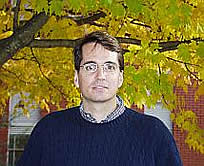PHYS 570 Class Info
The text book for the class is Atomic Physics by Christopher J. Foot.
We will cover Chapters 1-7 with additional material at the end of the semester on scattering. The class notes below was covered in 2022 & 24. Course description.
Syllabus
Office hours: Wednesday 2:00-3:00, Thursday 2:00-3:00 (Contact me by email if you want to arrange a special time.)
Homework will be due by midnight on Thursdays. You.You must show enough work on the homework so the grader can understand what you're doing. Ideally you should work the problems yourself without help. Any collaborative effort in doing the homework should be explicitly acknowledged, include the names of people collaborating with on each problem set. Acknowledge all sources from whom material is taken in homework solutions.
So that no one has a weird advantage, the solutions are at
https://users.physics.ox.ac.uk/~Foot/Book/index.shtml
Class
Notes
Chap 1; Dipole Blockade info,
Laser
wakefield info, High
Harmonic Generation info, Above Threshold Ionization info, 2018 Nobel Prize, 2023 Nobel PrizeChap 2; Legendre Polynomials, Associated Legendre Polynomials, Spherical Harmonics, Radial energies/wave functions, Radail wavefunction image, Radial wavefunction, Clebsch-Gordon pdf, Clebsch-Gordon calculator
Chap 7; Ramsey papers, 1989 Nobel Prize, Ramsey bio, Programs 2 state, plots of 2 state calculations (pdf, pptx), Programs Exponential Decay, Programs Density Matrix, Quantum Zeno Effect programs/plots
Chap 3; Papers and plots
Chap 4; Papers and plots
Chap 5; Papers and plots
Chap 6; Papers and plots
Chap 10Griffiths; Papers and plots
Chap 11; Papers and plots
Chap 12; Papers and plots
Homework
HWK 1 (Due Thu Jan 15; 3 problems):
1) Foot (1.1)
2) Foot (1.3)
3) Foot (1.8)

